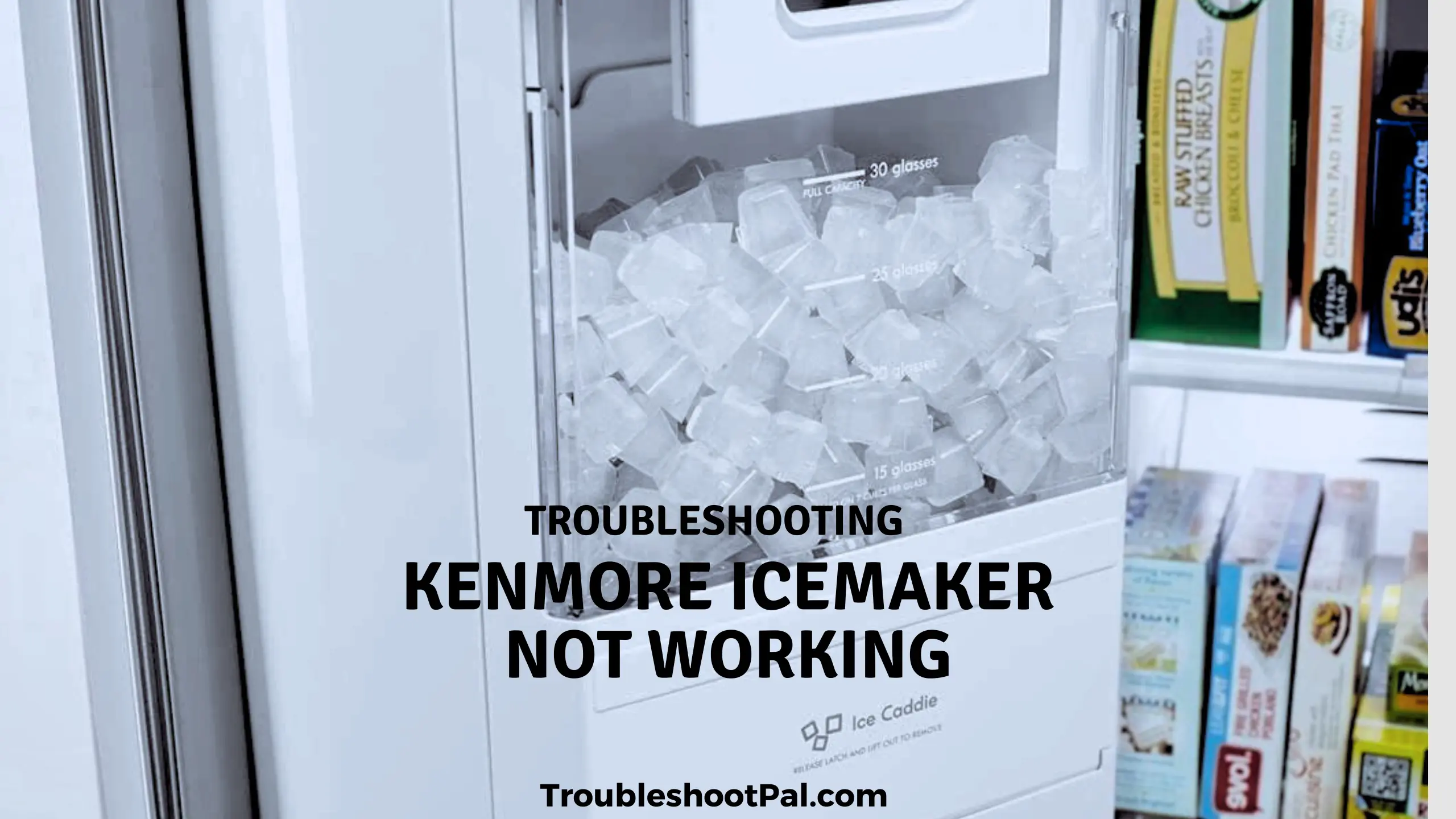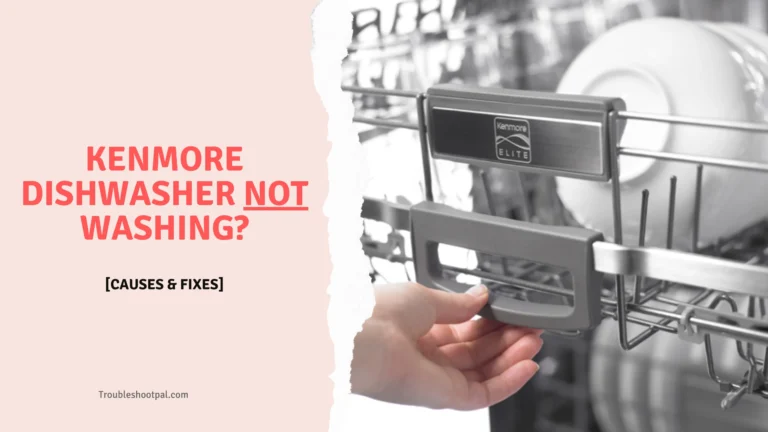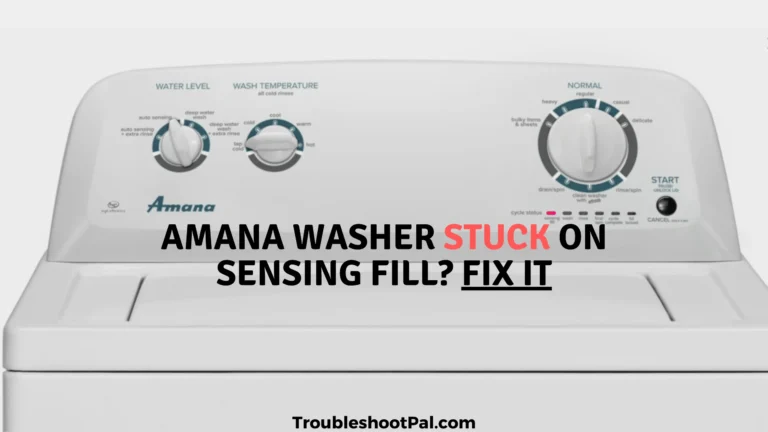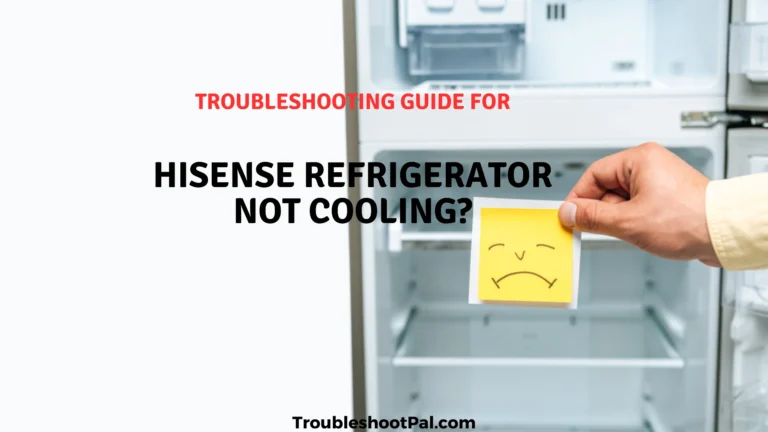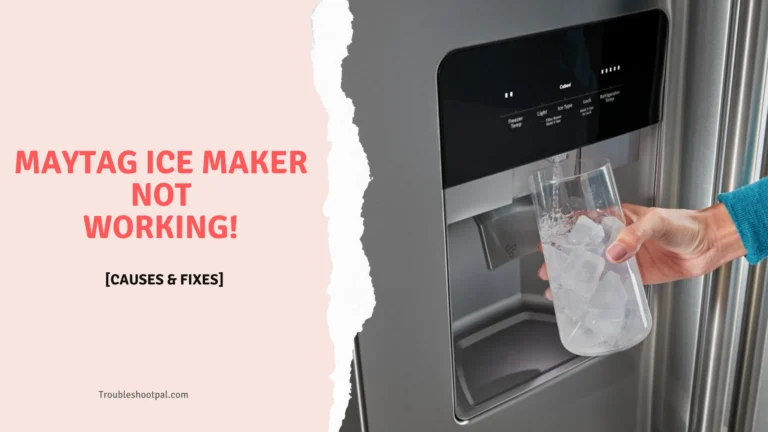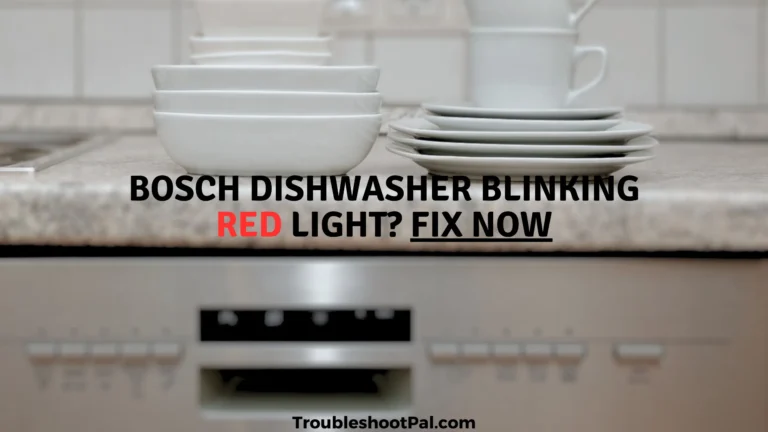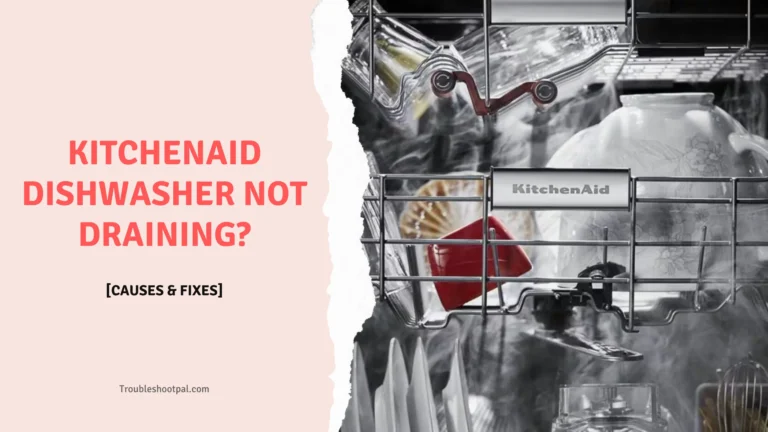Kenmore Ice Maker Not Working
We all know that Kenmore electronic appliances are renowned for their exceptional craftsmanship and engineering. They’re built to last for decades and even longer. Unlike any other Kenmore appliance, a Kenmore refrigerator is highly reliable and offers the convenience of fresh ice on demand.
Nevertheless, like any other appliance, a Kenmore ice maker may develop issues as it ages. However, the best thing about owning a Kenmore appliance is the accessibility of a wide range of replacement parts and accessories. If you encounter any problems, repairs, and maintenance become easier.
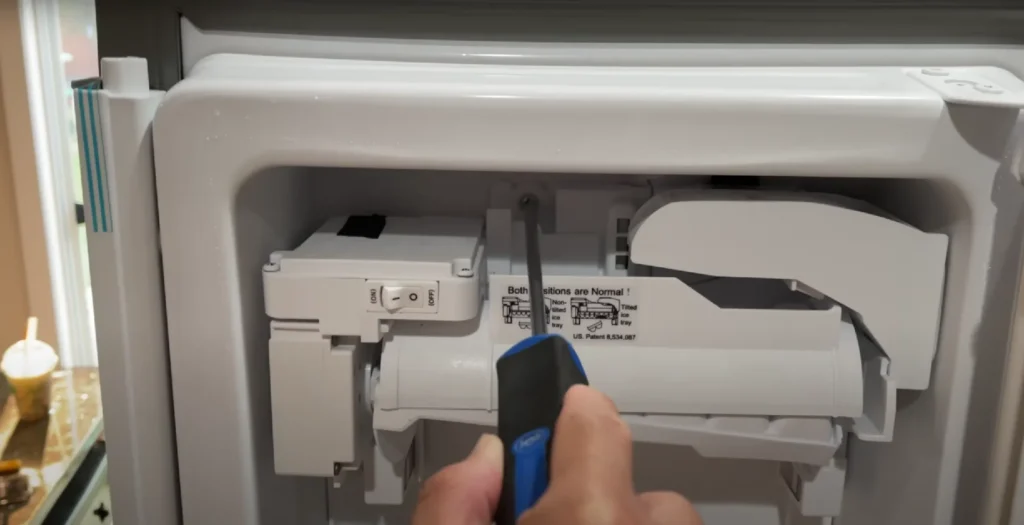
In this article, we will go through all the common problems/issues that are occurring with Kenmore icemakers, we’ll explore common problems that Kenmore icemakers may encounter and will provide a detailed troubleshooting step-by-step guide to help you get your ice maker back working again like before.
Whether you’re dealing with a jammed ice maker, a lack of ice production, or you’re finding that the ice it produces doesn’t meet your expectations, rest assured, we have the solutions to address all these issues! So, without taking any more time, let’s dive into this troubleshooting guide.
QuickFix For Kenmore Ice Maker Not Working
Table of Contents
- 1 QuickFix For Kenmore Ice Maker Not Working
- 1.0.0.1 1: Ice Maker Abruptly Stops Working
- 1.0.0.2 2: Slow Ice Production
- 1.0.0.3 3: Ice Maker Isn’t Producing Ice
- 1.0.0.4 4: Ice Maker Fails to Dispense Ice
- 1.0.0.5 5: Ice Maker Leaks Water
- 1.0.0.6 6: Ice Maker Freezes Up
- 1.0.0.7 7: Ice Overflows from the Maker
- 1.0.0.8 8: Ice Maker Doesn’t Fill Up
- 1.0.0.9 9: Smaller Ice Cubes Produced
- 1.0.0.10 10: Dirty or Discolored Ice
- 1.0.0.11 11: Unusual Taste in Ice
- 1.0.0.12 12: Ice Maker Fails to Turn On
- 1.1 Common Kenmore Icemaker Issues and Troubleshooting Steps:
- 1.1.1 1. Kenmore Ice Maker Stops Working
- 1.1.2 2. Slow Ice Production
- 1.1.3 3. Kenmore Ice Maker Isn’t Producing Ice
- 1.1.4 4. Kenmore Ice Maker Fails to Dispense Ice
- 1.1.5 5. Kenmore Ice Maker Leaks Water
- 1.1.6 6. Ice Maker Water Inlet is Frozen
- 1.1.7 7. Ice Overflows from the Maker
- 1.1.8 8. Kenmore Ice Maker Doesn’t Fill Up
- 1.1.9 9. Smaller Ice Cubes Produced
- 1.1.10 10. Dirty or Discolored Ice
- 1.1.11 11. Unusual Taste in Ice
- 1.1.12 12. Kenmore Ice Maker Fails to Turn On
- 1.1.13 13. Check for Refrigerator Door Wiring Issues
- 2 Conclusion
1: Ice Maker Abruptly Stops Working
- Problem: The ice maker suddenly stops working.
- Potential Causes: Accidental activation of the Pause option, blocked ejector’s arm, ejector’s arm stuck in the “Off” position.
- Quick Fix / Troubleshooting:
- Deactivate the Pause option.
- Clear any blockage in the ejector’s arm.
- Release the ejector arm from the “Off” position.
2: Slow Ice Production
- Problem: The ice maker produces ice slowly.
- Potential Causes: Clogged water filter, warmer freezer, faulty water inlet valve.
- Quick Fix / Troubleshooting:
- Replace a clogged water filter or a malfunctioning inlet valve.
- Ensure the freezer temperature is below 10°C or 50°F.
3: Ice Maker Isn’t Producing Ice
- Problem: The ice maker isn’t producing any ice.
- Potential Causes: Warm freezer, low water pressure, clogged filter, torn door gasket, issues with switches, thermostat, control board, or water inlet valve.
- Quick Fix / Troubleshooting:
- Lower freezer temperature to under 10°C or 50°F.
- Increase water pressure to at least 20 psi.
- Replace clogged filter, torn door gasket, or any faulty components.
4: Ice Maker Fails to Dispense Ice
- Problem: The ice maker doesn’t dispense ice properly.
- Potential Causes: Ice clumping, frozen auger motor, faulty thermostat.
- Quick Fix / Troubleshooting:
- Break up ice clumps if present.
- Replace a defective thermostat.
- Consult a professional for issues with a frozen auger motor.
5: Ice Maker Leaks Water
- Problem: The ice maker is leaking water.
- Potential Causes: Ice clumping, unlevelled fridge, misaligned fill valve.
- Quick Fix / Troubleshooting:
- Reduce ice clumping.
- Level the fridge.
- Re-align the fill valve if mispositioned.
6: Ice Maker Freezes Up
- Problem: The ice maker is frozen.
- Potential Causes: Low fridge temperature, frosty water supply tube.
- Quick Fix / Troubleshooting:
- Adjust fridge temperature (1°C to 4°C or 34°F to 40°F).
- Defrost the inlet valve if frozen.
7: Ice Overflows from the Maker
- Problem: Ice overflows from the ice maker.
- Potential Causes: Improperly positioned ice bin, broken ice control arm, missing shelf.
- Quick Fix / Troubleshooting:
- Reposition the ice bin.
- Replace a broken control arm or add a missing shelf if needed.
8: Ice Maker Doesn’t Fill Up
- Problem: The ice maker doesn’t fill up.
- Potential Causes: Water supply turned off, faulty filter, inlet valve, motor, control board, or kinked hose.
- Quick Fix / Troubleshooting:
- Ensure the water supply is on and straighten the kinked hose.
- Replace any defective components, including the water filter, inlet valve, motor, or control board.
9: Smaller Ice Cubes Produced
- Problem: Smaller ice cubes are being produced.
- Potential Causes: Low water supply or higher freezer temperature.
- Quick Fix / Troubleshooting:
- Check for blockages in the water supply line.
- Lower the freezer temperature.
10: Dirty or Discolored Ice
- Problem: Ice appears dirty or discolored.
- Potential Causes: Issues with the inlet valve, dirty ice mold tray, or contaminated supply line.
- Quick Fix / Troubleshooting:
- Replace a faulty inlet valve.
- Clean the ice mold tray.
- Ensure the supply line is free from contaminants.
11: Unusual Taste in Ice
- Problem: Ice has an unpleasant taste.
- Potential Causes: Clogged water filter, dirty ice bin, clogged inlet valve, spoiled food in the freezer.
- Quick Fix / Troubleshooting:
- Replace a clogged water filter or inlet valve.
- Clean the ice bin.
- Remove spoiled food from the freezer to improve the ice taste.
12: Ice Maker Fails to Turn On
- Problem: The ice maker doesn’t turn on.
- Potential Causes: Child lock feature enabled, faulty ice maker.
- Quick Fix / Troubleshooting:
- Deactivate the child lock if enabled.
- Consider replacing the ice maker if it’s malfunctioning.
Common Kenmore Icemaker Issues and Troubleshooting Steps:
Ice makers are incredibly convenient but can experience various issues hindering their functionality. This troubleshooting guide will help you identify and address common problems that can arise with your ice maker, ensuring that you can enjoy a steady supply of ice whenever you need it.
1. Kenmore Ice Maker Stops Working
Potential Causes:
- Accidental Activation of Pause Option: Sometimes, the ice maker can stop producing ice due to accidental activation of the Pause option.
- Blocked Ejector Arm: Obstructions in the ice maker’s mechanism, like a stuck ice cube, can hinder the operation of the ejector arm.
- Ejector Arm Stuck in “Off” Position: The ejector arm may get stuck in the “off” position, preventing it from functioning correctly.
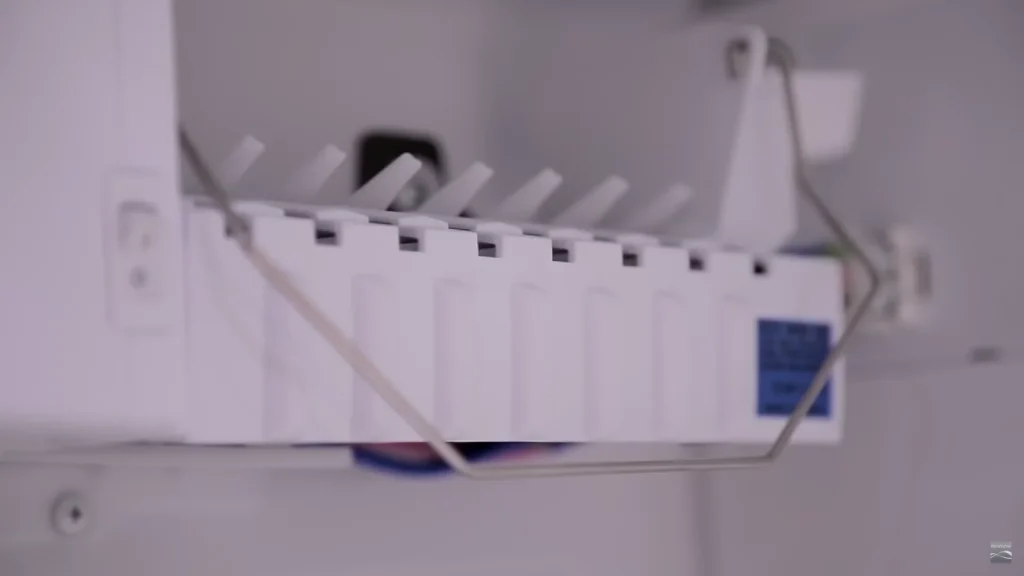
Troubleshooting Steps:
1: Check for the “Pause” Option
- Look for a “Pause” option on the control panel or user interface.
- If found, consult your user manual for specific instructions to deactivate this function.
2: Inspect the Ejector Arm
- Examine the ejector arm for any obstructions or ice cubes that may be stuck.
- If you find any blockages, carefully clear them to ensure the arm moves freely.
3: Release the Ejector Arm from the “Off” Position
- If the ejector arm is stuck in the “Off” position, gently release it.
- Ensure that it is free to move as intended.
2. Slow Ice Production
Potential Causes:
- Clogged Water Filter: A clogged water filter can restrict water flow, resulting in slower ice production.
- Warmer Freezer: If the freezer temperature is too high, it can delay the freezing of ice cubes.
- Faulty Water Inlet Valve: A malfunctioning water inlet valve may not provide an adequate supply of water for ice production.
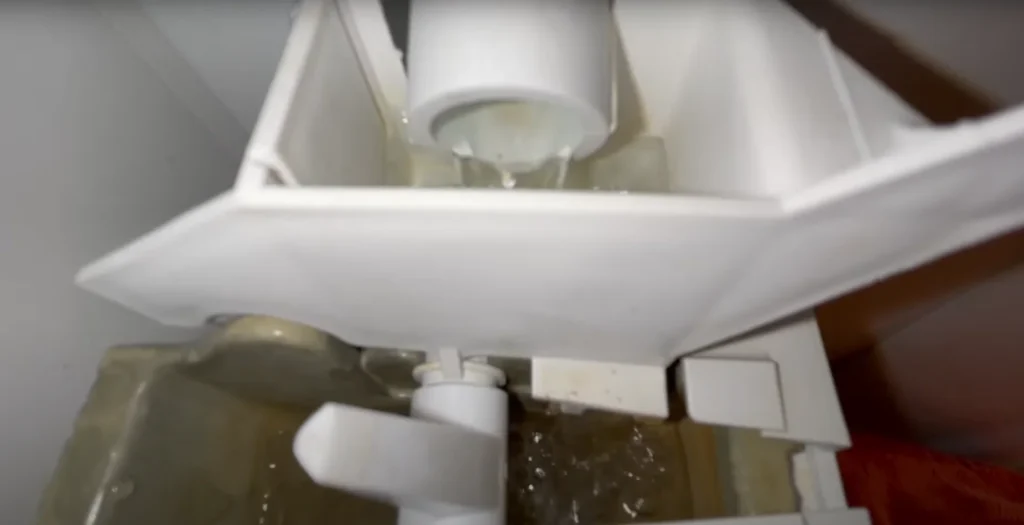
Troubleshooting Steps:
1: Replace Clogged Water Filter or Faulty Inlet Valve
- If ice production is slow, start by checking and potentially replacing the water filter if it’s clogged or the water inlet valve if it’s malfunctioning.
- Refer to your user manual for specific replacement instructions.
2: Adjust Freezer Temperature
- Access the freezer temperature settings and make sure it’s set to maintain a temperature below 10°C (50°F) for optimal ice production.
3. Kenmore Ice Maker Isn’t Producing Ice
Potential Causes:
- Warm Freezer: Elevated freezer temperatures can prevent proper ice production.
- Low Water Pressure: Inadequate water pressure can impede the ice-making process.
- Clogged Filter: A clogged filter can restrict water flow.
- Torn Door Gasket: A damaged door gasket can allow warm air to enter the freezer.
- Problems with Various Components: Several components such as the ice maker switch, door switch, mold thermostat, ice level control board, and water inlet valve may develop issues.
Troubleshooting Steps:
1: Lower Freezer Temperature
- Access the freezer temperature settings and lower it to below 10°C (50°F) for effective ice cube formation.
2: Increase Water Pressure
- Confirm that the water supply to your refrigerator has a minimum pressure of at least 20 psi.
3: Replace Faulty Components
- Inspect the ice maker for any problematic components, such as switches, thermostats, control boards, or the water inlet valve.
- If any of these components are found to be faulty, refer to your user manual for instructions on their replacement.
4. Kenmore Ice Maker Fails to Dispense Ice
Potential Causes:
- Problems with Ice Clumping: Clumps of ice can obstruct the dispensing mechanism.
- Frozen Auger Motor: Extremely low temperatures in the freezer may lead to the freezing of the auger motor.
- Faulty Thermostat: A malfunctioning thermostat can affect the ice dispensing process.
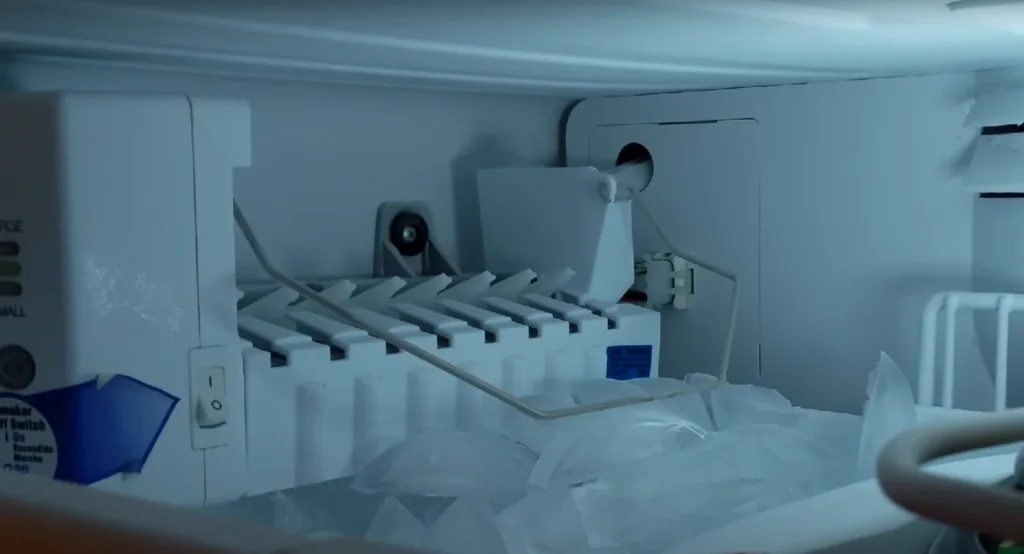
Troubleshooting Steps:
1: Break Up Ice Clumps
- Check the ice storage bin for clumped ice cubes.
- Gently break apart any clumps to prevent clogs.
2: Replace a Faulty Thermostat
- If you suspect a defective thermostat, consult your user manual for guidance on how to replace it.
3: Consult a Professional
- If the issue is related to a frozen auger motor, it’s best to seek assistance from a qualified appliance technician.
5. Kenmore Ice Maker Leaks Water
Potential Causes:
- Ice Clumping: Accumulation of ice can cause overflow, leading to water leakage.
- Unlevelled Fridge: If your refrigerator is not properly level, it can affect the ice maker’s operation.
- Misaligned Fill Valve: The fill valve may be misaligned, causing water to escape.
Troubleshooting Steps:
1: Reduce Ice Clumping
- Regularly inspect and break up any ice clumps in the storage bin to prevent overflows and water leakage.
2: Level the Fridge
- Use a leveling tool to ensure your refrigerator is on a level surface.
3: Re-align the Fill Valve
- If the fill valve appears misaligned, follow your user manual’s guidance to reposition it correctly.
6. Ice Maker Water Inlet is Frozen
Potential Causes:
- Low Fridge Temperature: Extremely low fridge temperatures can lead to the freezing of the ice maker’s components.
- Frosty Water Supply Tube: A frozen water supply tube can hinder the flow of water into the ice maker.

Troubleshooting Steps:
1: Adjust Fridge Temperature
- Access the refrigerator’s temperature settings and adjust it to maintain a temperature between 1°C and 4°C (34°F to 40°F) to prevent freezing of ice maker components.
2: Defrost the Inlet Valve
- If the water inlet valve is frozen, turn off the ice maker, unplug the refrigerator, and allow the inlet valve to thaw.
7. Ice Overflows from the Maker
Potential Causes:
- Improperly Positioned Ice Bin: If the ice bin is not correctly seated, it can lead to overflow.
- Broken Ice Control Arm: A damaged or malfunctioning ice control arm may not regulate ice production.
- Missing Shelf: If a shelf is missing, it can contribute to ice overflow.
Troubleshooting Steps:
1: Reposition the Ice Bin
- Ensure that the ice bin is correctly seated and securely placed within the ice maker to prevent overflow.
2: Replace a Broken Control Arm
- If the ice control arm is damaged or malfunctioning, refer to your user manual for instructions on its replacement.
3: Add a Missing Shelf
- If your ice maker lacks a shelf, consider obtaining a replacement from the manufacturer or an authorized dealer and installing it as needed.
8. Kenmore Ice Maker Doesn’t Fill Up
Potential Causes:
- Water Supply Turned Off: The water supply to the refrigerator may be turned off.
- Faulty Filter: A clogged or malfunctioning water filter can obstruct water flow.
- Inlet Valve Issues: Problems with the inlet valve may prevent water from reaching the ice maker.
- Motor or Control Board Malfunction: A malfunctioning motor or control board can impede the ice-making process.
- Kinked Hose: A kinked water supply hose can restrict water flow.
Troubleshooting Steps:
1: Ensure the Water Supply is On
- Verify that the water supply to the refrigerator is turned on.
2: Straighten Out Kinks in the Hose
- Examine the water supply hose for any kinks or restrictions and straighten it if necessary.
3: Replace Faulty Components
- If the issue persists, consider replacing any defective components such as the water filter, inlet valve, motor, or control board.
9. Smaller Ice Cubes Produced
Potential Causes:
- Low Water Supply: Inadequate water supply can result in smaller ice cubes.
- Higher Freezer Temperature: Elevated freezer temperatures can affect ice cube size.
- Blocked Water Supply Line: Obstructions in the water supply line can restrict water flow.
Troubleshooting Steps:
1: Check for Blockages
- Examine the water supply line for any obstructions or blockages that may be limiting water flow.
2: Lower Freezer Temperature
- Access the freezer temperature settings and lower it to maintain it within the recommended range for proper ice cube formation.
10. Dirty or Discolored Ice
Potential Causes:
- Issues with the Inlet Valve: A malfunctioning inlet valve can introduce impurities into the ice-making process.
- Dirty Ice Mold Tray: An unclean ice mold tray can contaminate the ice cubes.
- Contaminated Supply Line: If the water supply line is not clean, it can lead to discolored or tainted ice.
Troubleshooting Steps:
1: Replace a Faulty Inlet Valve
- If you suspect that the inlet valve is the reason behind impurities in the ice, consult your user manual for guidance on replacing it.
2: Clean the Ice Mold Tray
- Regularly clean and sanitize the ice mold tray to prevent the accumulation of dirt and contaminants.
3: Ensure a Clean Supply Line
- Examine the water supply line to ensure it is free from any contaminants, sediment, or impurities.
11. Unusual Taste in Ice
Potential Causes:
- Clogged Water Filter: A clogged water filter can affect the taste of the ice.
- Dirty Ice Bin: An unclean ice storage bin can contaminate the ice.
- Clogged Inlet Valve: A malfunctioning or obstructed inlet valve can introduce impurities into the ice.
- Spoiled Food in the Freezer: Food items in the freezer that have gone bad can release odors and affect the taste of the ice.
Troubleshooting Steps:
1: Replace a Clogged Water Filter or Inlet Valve
- If you suspect that a clogged filter or inlet valve is causing the issue, consult your user manual for instructions on replacement.
2: Clean the Ice Bin
- Regularly clean and sanitize the ice storage bin to ensure the ice remains free from contaminants.
3: Remove Spoiled Food
- Inspect the freezer for any expired or spoiled food items and remove them to eliminate any potential sources of unusual tastes in the ice.
12. Kenmore Ice Maker Fails to Turn On
Potential Causes:
- Child Lock Feature Active: Some ice makers have a child lock feature that may be accidentally enabled.
- Faulty Ice Maker: If the ice maker itself is malfunctioning, it may not turn on.
Troubleshooting Steps:
1: Deactivate the Child Lock
- Consult your user manual for instructions on deactivating the child lock feature if it’s enabled.
2: Consider Replacing the Ice Maker
- If all troubleshooting steps fail and the ice maker is still not operational, consider replacing it if it’s determined to be malfunctioning.
13. Check for Refrigerator Door Wiring Issues
Make sure to inspect the wiring of the refrigerator door. In certain models, there’s a problem where the wires under or above the door can get damaged. Steps to check this Issue:-
1: Visual Inspection of Door Wiring
- Open the refrigerator door and visually inspect the wiring located at the bottom of the door.
- Look for any signs of wear, damage, or pinching of the wires.
2: Identify Design Flaw
- Be aware that some Kenmore refrigerator models have a design flaw where the wires were installed without sufficient slack for the door to fully open and close.
- Understand that every time the refrigerator door is used, these wires may be pulled on, leading to potential damage or wear.
3: Check for Ripped or Torn Wires
- If you find that the wiring is ripped or torn due to a design flaw or any other reason, it can result in a loss of power to your ice maker.
- Consider examining the wires closely to identify any such damage.
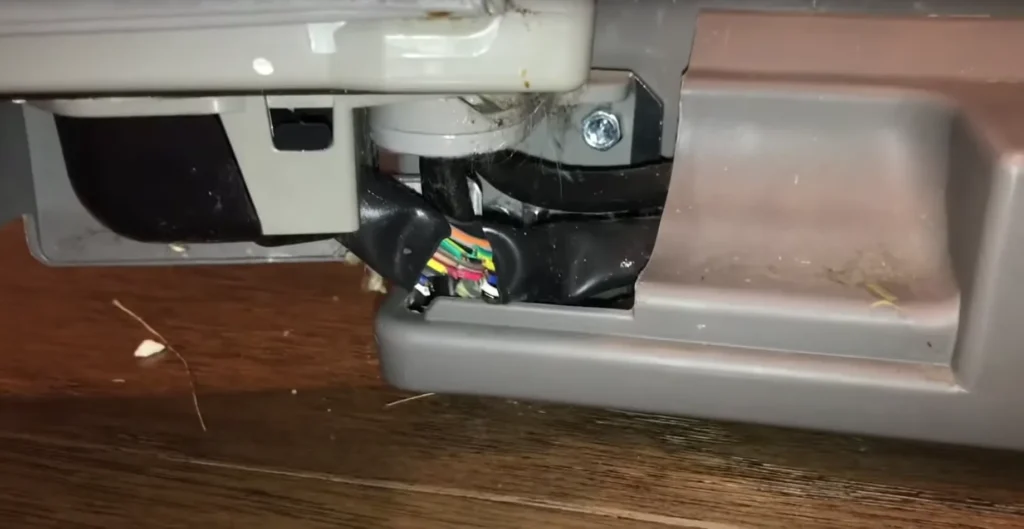
4: Consider Wire Replacement
- If you discover damaged wiring, you may need to replace the wires to ensure a consistent power supply to your ice maker.
- Contact the manufacturer or a professional technician for assistance with wire replacement.
5: Ensure Proper Door Function
- Verify that the refrigerator door opens and closes smoothly without pulling on or damaging the wiring.
- If you notice any issues with door operation, consider having the door adjusted or serviced to prevent further wire damage.
6: Complete the Troubleshooting Process
- After addressing any wiring issues, including replacing damaged wires, proceed with the remaining troubleshooting steps to ensure your Kenmore ice maker functions optimally.
By following these detailed troubleshooting steps and tips, you can effectively diagnose and address a wide range of issues that may arise with your Kenmore ice maker, ensuring it continues to produce ice reliably and efficiently.
If you encounter problems that are too hard to fix with the earlier advice, it’s best to contact a professional appliance technician or the manufacturer’s customer support for extra help and any needed repairs.
Find Your Kenmore Refrigerator Manual: If you know your Kenmore refrigerator’s model number, go to Kenmore.com and type it into the search bar. Look for “User Manual” under “More Information.” You might find model-specific troubleshooting steps in the manual. Also, some refrigerators have a physical copy of the manual under the top right-hand side cover.
Contact Kenmore Support: If your Kenmore ice maker still isn’t working, it might be best to replace the whole ice-making unit. Usually, these repairs need a professional. Contact Kenmore support at 1-844-553-6667 / 1-800-366-7278. You can also schedule a visit from a certified technician online. Your warranty may cover the repair cost in some cases.
Conclusion
In conclusion, troubleshooting and maintaining your Kenmore ice maker can help ensure that it consistently provides a steady supply of ice for your daily needs. By following the step-by-step troubleshooting guide outlined above, you can address common issues that may arise, from a sudden halt in ice production to an unusual taste in ice.
Remember to start with the most basic steps, such as checking for a “Pause” option, ensuring the ice maker is ON, and verifying the freezer and refrigerator temperatures are properly set. If issues persist, inspect and potentially replace components like water filters, inlet valves, and switches. Additionally, keeping the ice maker clean and free from obstructions is essential for smooth operation.
If you encounter problems that cannot be resolved through these troubleshooting steps, consider consulting your user manual or seeking assistance from a professional appliance technician. In some cases, the ice maker may need replacement if it is determined to be malfunctioning.
Regular maintenance and proactive troubleshooting can prolong the life of your Kenmore ice maker, ensuring a continuous supply of high-quality ice for your beverages and daily use. Additionally, these steps will help ensure a trouble-free experience with your ice maker. 😊

